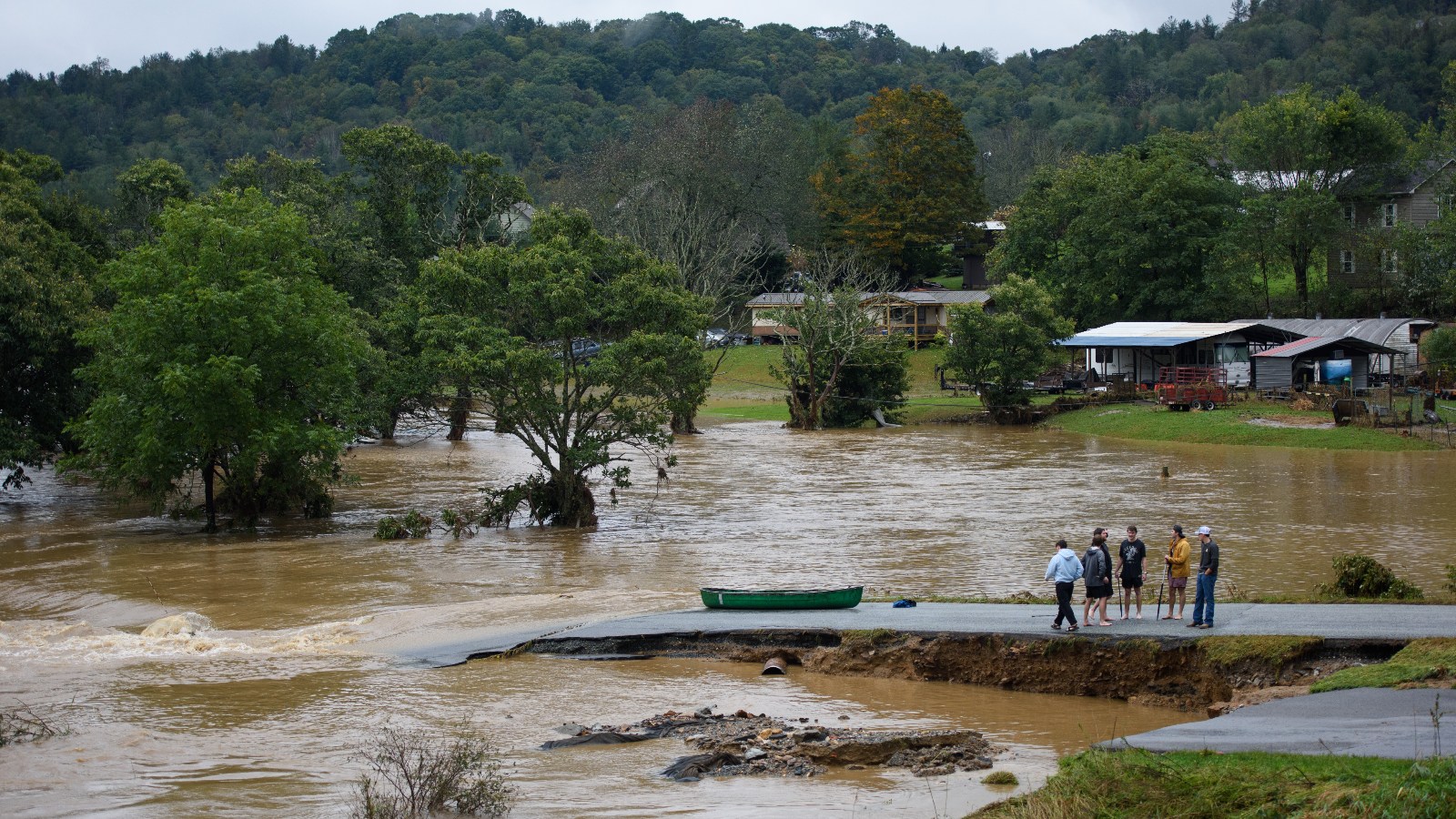When the Marshall Fire swept through the grassy plains and foothills outside Boulder, Colorado, in late December 2021, it burned down more than 1,000 homes — and left many young people shaken. “It can just be pure anxiety — you’re literally watching a fire march its way across, and it’s really, really close,” said David Thesenga, an 8th grade science teacher. Some of his students at Alexander Dawson School in the small town of Lafayette lost their homes to the fire.
As more students come to school traumatized by living through fires, floods, and other extreme weather, teachers are being asked to do more than educate — they’re also acting as untrained therapists. While Thesenga’s private school has psychologists on staff, they don’t provide mental health resources dedicated to helping students work through distress related to the changing climate, whether it’s trauma from a real event or more general anxiety about an overheated future. “Sometimes you don’t need a generic [tool],” he said. “What you need is something very specific to the trauma or to the thing that is causing you stress, and that is climate change.”
Middle school teachers around the country say they feel unprepared to help their students cope with the stress of living on a warming planet, according to a new survey of 63 middle school teachers across the United States by the Climate Mental Health Network and the National Environmental Education Foundation. Nearly all of the teachers surveyed reported seeing emotional reactions from their students when the subject of climate change came up, but many of them lacked the resources to respond.
“Students are showing up in the classroom with a range of climate emotions that can be debilitating,” said Sarah Newman, the founder and executive director of the Climate Mental Health Network. “This is impacting students’ ability to learn and how they’re engaging in the classroom.”
One of the biggest concerns Thesenga hears from his students is that climate change feels out of their control and thinking about it seems overwhelming. “They just feel powerless, and that’s probably the scariest thing for them,” he said.
Katie Larsen, who teaches 6th and 9th grade biology at The Foote School in New Haven, Connecticut, says that her students have grown up knowing that climate change is a problem, but learning about the extent of environmental damage — like how many species go extinct every year — often surprises them. She tries to shift the conversation away from doom and gloom and toward something more hopeful, such as what people can do to save ecosystems. “I think the more positive you can make it, and action-oriented, the better,” she said.
A growing body of research shows that young people’s anxieties about climate change can affect their relationships and their ability to think and function. Last November, a study in The Lancet Planetary Health found that 16- to 25-year-olds were struggling with their worries about climate change. Of the more than 15,000 young Americans surveyed, 43 percent reported that it hurt their mental health, and 38 percent said that it made their daily life worse.
Then there’s the matter that surviving a specific disaster can be traumatizing for people of any age. Living through a hurricane or flood can lead to an increased risk of depression and post-traumatic stress disorder, while wildfires have been connected with anxiety, substance abuse, and sleeping problems, according to a report from the Intergovernmental Panel on Climate Change in 2022. These problems are especially acute for children and adolescents.
Michael Ciaglo / Getty Images
To address the lack of resources for dealing with distress related to climate change, the Climate Mental Health Network and the National Environmental Education Foundation developed a new toolkit that teachers can use in their middle school classrooms. One handout, called the “climate emotions wheel,” helps students identify their emotions, arranging them into four main categories — anger, sadness, fear, and positivity — and then breaking those down to more specific feelings, such as betrayal, grief, anxiety, and empowerment.
While science classrooms are a natural fit for these resources, Megan Willig, who helped create the activities with the National Environmental Education Foundation, says she hopes that teachers can use them in English, social studies, and art classes, among other subjects. They’re designed to be quick and ready to use. “Teachers shared that they’re busy, and they have a lot on their plates,” said Willig, who’s a former teacher herself.
The exercises prompt students to reflect on how other young people are processing distress over climate change and explore how to turn their anxiety into action. One activity in the toolkit introduces “negativity bias,” referring to how the brain often latches onto negative thoughts, and asks students to counter that tendency by brainstorming happier emotions related to the Earth. Another prompts students to consider their “spheres of influence” and think about what they can do to contribute to solving climate change in their inner circle, their community, and in the wider world.
The toolkit was piloted last fall by 40 teachers who volunteered in 25 states. Afterward, all of the teachers who participated said they’d recommend it to a colleague, and a majority reported feeling more confident addressing students’ emotions — as well as their own. The tools were successful in red states like Utah, Texas, Mississippi, Florida, West Virginia, and Indiana, as well as blue ones like New York and Washington. Newman thinks it’s a sign that the need for these kinds of resources isn’t a partisan issue.
She views middle school as a crucial moment to offer mental health support. “Kids are really becoming more aware of climate change and what’s actually happening,” she said. “It’s often the first time that they’re going to be learning about it in school. They have more access to social media and online news, which is amplifying their awareness and knowledge about climate change, and they’re going through really formative times.”
Asked if he would try the exercises, Thesenga said he would give them a shot. “Absolutely, why the hell not?” he said. In his Facebook groups, he’s seen fellow teachers say they avoid the subject altogether in class. “That is not the answer — your students want to know,” Thesenga said. “You’re the frontline person. You have to buck it up, and you have to do this.”
Source link
Kate Yoder grist.org



